Change is a constant and along with real estate market figures, what is 'in' for interior designs and decorations goes in different directions every year.
Knowing what is happening today is for everyone—it allows you to either be content staying in your home for another few years if you can’t sell, staging your home attractively to get the highest sale price or find a home that you can personalize how you would like.
So if you're wondering what are interior design trends for 2024, below are the top trending styles to watch out for:

Minimalism has reigned for a lot of years; now, it's time for maximalism to shine.
Maximalism combines bold articles, vibrant colors, and clashing prints. To begin, add a variety of pillows in different colors and work your way up to furniture, paintings, and wallpaper.
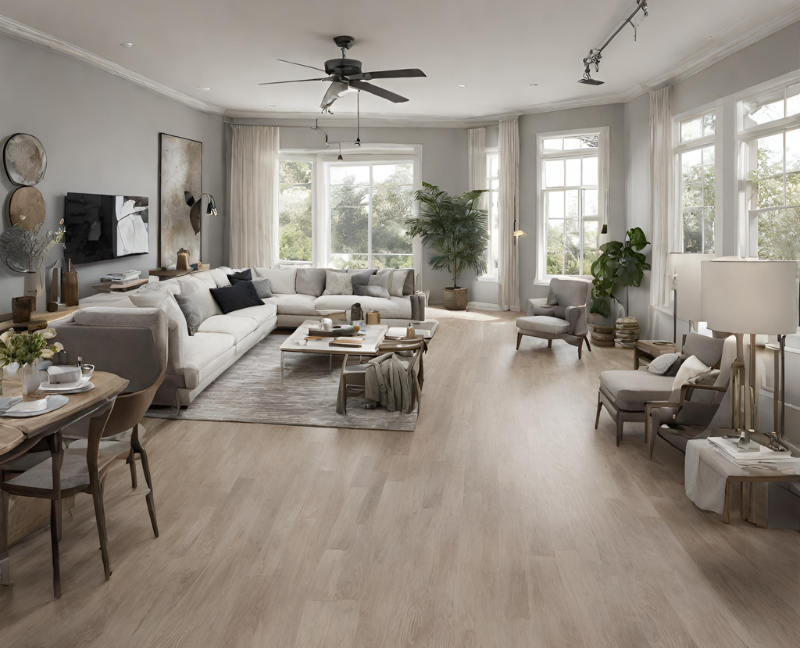
The inside of a house is what makes it a home. Being able to decorate and design your home how you like is one of the perks of homeownership.
As far as home layout, it is becoming more common for new home buyers to opt for great rooms or playrooms instead of a formal dining room. As formal dining rooms are rarely used, consider buying a home without one, or knocking down the formal dining room wall in an existing home to make the kitchen more spacious.
As a general rule, the American lifestyle is becoming much more casual than formal.
Open floor layouts enliven a house and make it far more accommodating, so, fewer, bigger rooms are considered a plus. This is something that can be controlled in more ways than just knocking down walls or buying houses that have wide-open layouts.
Opening up walkways, and diminishing obstructions—including excessive furniture and decorations—can make a big difference.
Also, greenhouse rooms and sunrooms are popular, because so many in Indiana and elsewhere are making being green a priority.
Consult with your startpackingidaho.com or Indianapolis Realtor agent to get their ideas as they see homes every day.
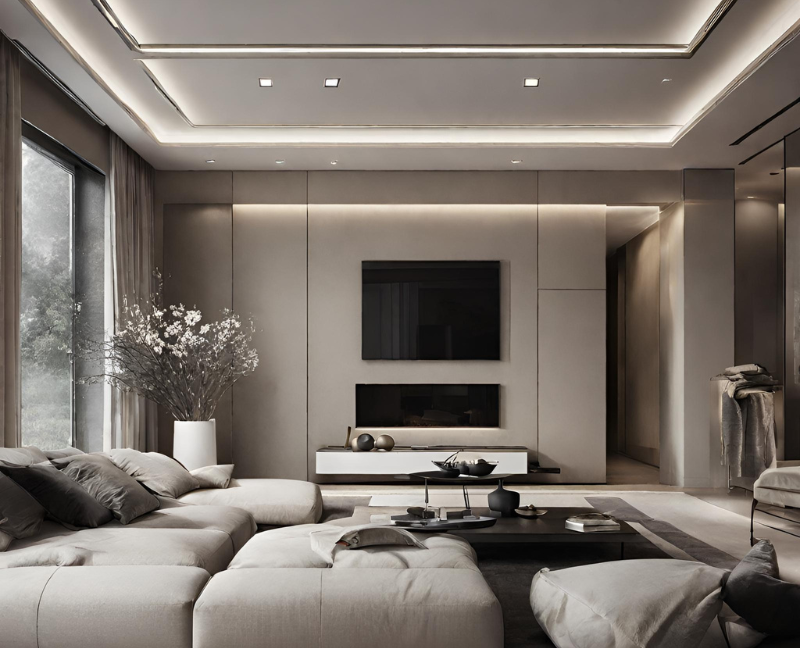
Like how it is in fashion, quiet luxury refers to styling the place using timeless pieces. It's both elegant and effortless, and it's captured the interests of many homeowners.
“The quiet luxury home décor trend is all about living in beautiful places that don't feel overdone,” says interior designer Andrea West.
Simple yet functional pieces, neutral hues, and timeless silhouettes are among the characteristics that characterize quiet luxury. Usually, home décor designs aim for perfection and colors that precisely match; however, with quiet luxury, the goal is to create an inviting, calming space with a touch of sophisticated simplicity.
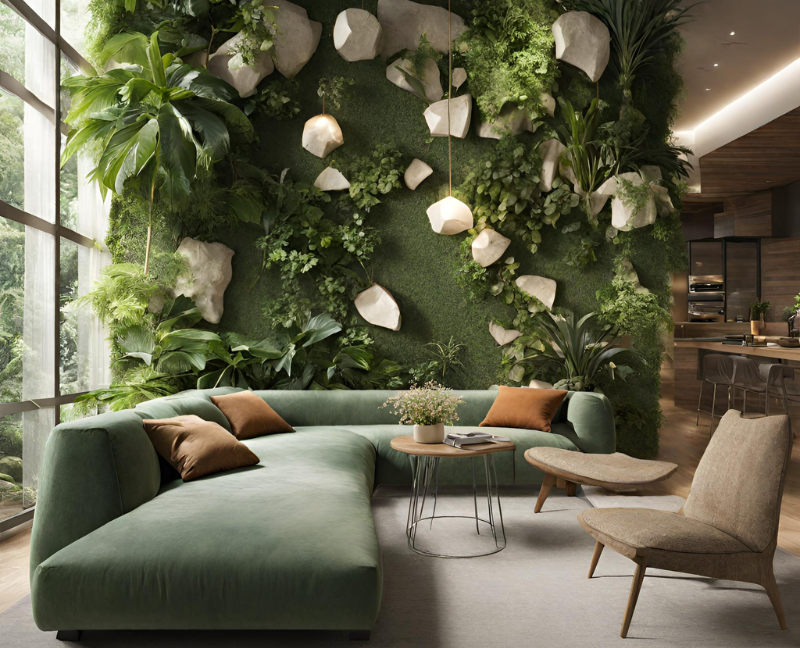
Biophilic design is focused on combining outdoors with indoors. This might include incorporating natural landscape features and natural lights and ventilation. By the end of 2020, the trend for luxurious biophilic design started to grow and this year, it's expected to get bigger.
Living green walls, more indoor plants, large windows for more natural light, and utilizing natural materials like stone and wood are some of the elements present in biophilic design.
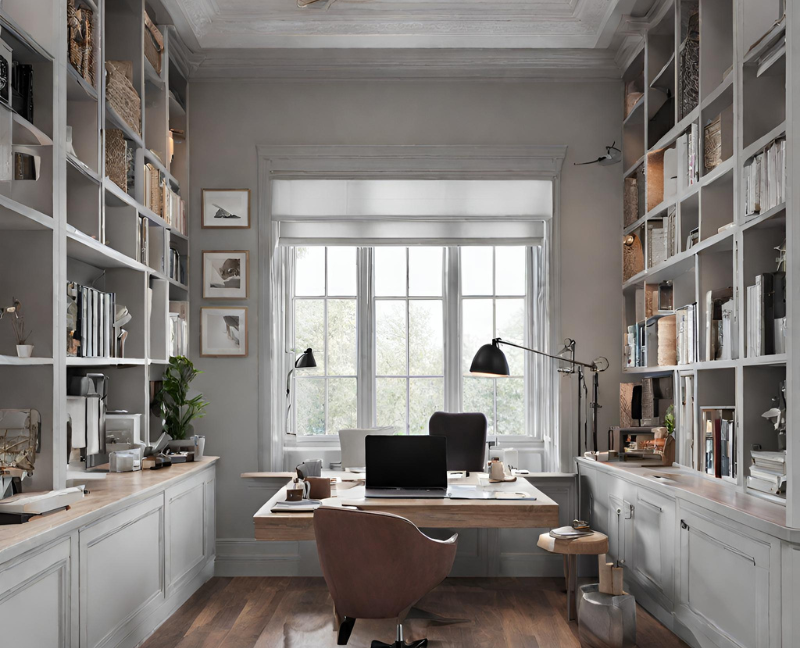
Upgrading home offices started a little over 5 years ago, back when the pandemic forced most of us to work from home.
While some moved back to their good ol' office cubicle, some are still working in the comforts of their very own home. Because of this, the trend to upgrade home offices has become popular.
Some of the home office improvements include:
These are the top 5 interior design trends in 2024 recognized by users and designers worldwide. If you want to elevate your home while on a budget, we have more tips for you. Just check out our website to see free resources you can use.
Green roofs provide both a natural and symbolic breath of fresh air in the busy concrete jungles that are today's cities. These inventive installations improve urban landscapes and the environment by decreasing heat, stormwater runoff, and air pollution.
This post will discuss how green roofs work, enabling city people to develop thriving green areas on top of their structures. The below ideas will show you how to grow beautiful green roofs and how they benefit the environment and community, whether you're a seasoned gardener or a beginner.
Plant-filled green roofs are also called living roofs. They are environmentally friendly and encourage sustainable development. Creating a green roof requires a waterproofing membrane, root barrier, drainage layer, growing medium, and vegetation. Green roofs' main goals are sustainable energy, stormwater management, and a healthy environment.
Green roof vegetation and substrate absorb precipitation, lowering pressure on drainage systems and flooding danger. As insulation, green roofs reduce heating and cooling needs, minimizing building energy consumption. They improve air quality and mitigate climate change by catching pollutants and carbon dioxide.
Meanwhile, rooftop gardens extend green roofs into outdoor living spaces for cultivation, recreation, and community participation. Beyond ecological benefits, rooftop gardens emphasize social and economic benefits.
Rooftop gardens are communal and entertainment settings. Sitting places, strolling trails, and playgrounds can be added to these gardens to create relaxing, social, and community spaces. It can also be a place where residents relax and connect by providing a break from city life.
Urban agriculture should be done outside to encourage sustainable food production. On your rooftop patio, grow fruits, veggies, and herbs in raised beds or containers. Use composting to recycle organic waste and feed plants.
Sustainable rooftop greenhouses mix agriculture and design. These unique structures allow rooftop farming of fresh produce. Sustainable design improves rooftop greenhouses' environmental performance. Install rainwater collecting, solar panels, and composting facilities to lessen your roof decking's ecological impact.
Hang baskets, pots, and cascading vines from pergolas or trellises. These designs produce a green curtain effect and provide visual appeal to the rooftop deck or patio, making it a beautiful green retreat. Rooftop greenhouses improve energy efficiency, air quality, and food sustainability using vertical space and modern growing methods.
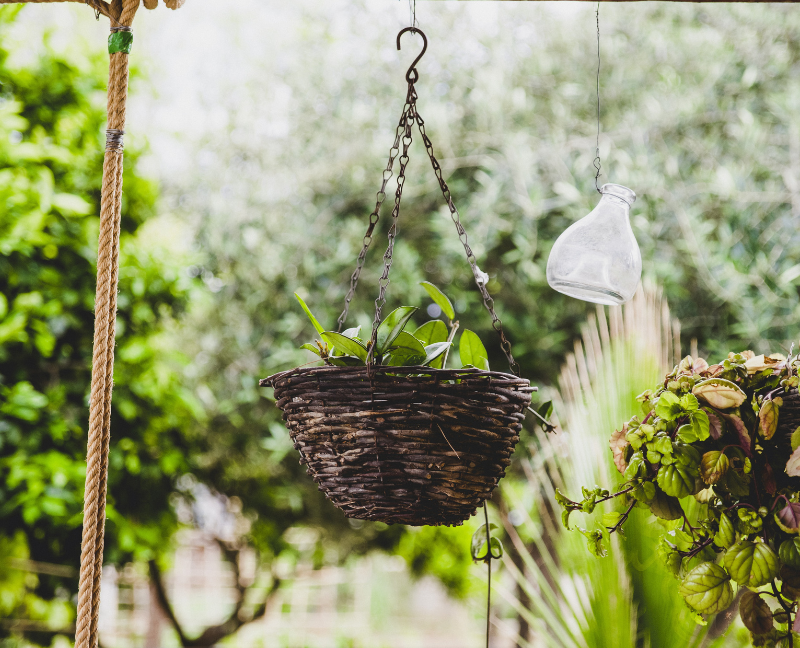
Create rooftop greenhouses with giant planters or raised beds. Easy maintenance, plant selection, and transportation are possible with this strategy. It works for studio apartment rooftop terraces with weight limits or limited space.
Plant local herbs and medicinal plants on your rooftop patio. Put culinary, medicinal, and fragrant herbs in separate sections. Practice and wellness are combined in this design.
Native plants thrive in local climates, require less care, and shelter wildlife. Ecological balance and indigenous plant conservation are achieved using this method.
Make rooftop gardens into sustainable and learning areas. Signage, information boards, and interactive displays could explain rooftop gardens, native plants, and other eco-friendly techniques.
Make the rooftop terrace a relaxing urban home. Create a soothing atmosphere with fountains or tiny ponds. Plants, trees, and water elements make these gardens a welcome respite from the city. They help preserve urban biodiversity by housing birds, butterflies, and other animals.
Creating a rooftop garden outdoor living space lets you relax, connect with nature, and enjoy the scenery. Select comfortable and sturdy outdoor furniture that matches your style and preferences, offers comfy seats and shade structures, and adds fragrant plants to enhance the sensory experience, illumination, and relaxation. For extra coziness, add plush cushions and pillows.
A rooftop terrace seamlessly connects indoor and outdoor living spaces. Residents may rest, party, and enjoy city views in its adaptable outdoor living and dining area. Rooftop terraces offer a retreat from the city with lounge seats, dining areas, and hot tubs. Design your roof decks for inspiration, socializing, and outdoor activities. It can create relaxing lounges or dining areas beneath covered pergolas.
Conclusion
Rooftop makeovers serve as an inspiration for creative design concepts and upcoming advancements in the building sector. Green areas are being incorporated into building designs by architects and urban planners, who are putting sustainability and the welfare of the community first.
"Less is more" provides a practical alternative in a society where distractions and clutter are widespread. The minimalist lifestyle fosters a deeper and more meaningful journey by removing excess and highlighting essential elements.
Prioritizing personal growth, relationships, and experiences over material possessions and superficial desires characterizes the minimalist lifestyle benefits.
As individuals increasingly strive to simplify and scale down their living environments, this minimalist lifestyle mirrors a broader cultural transition towards simplicity and sustainability.
If you're contemplating adopting a minimalist lifestyle, here are several reasons why you might be inclined to explore its minimalist lifestyle benefits.
Reducing the amount of things and activities you engage in is a necessary part of leading a minimalist lifestyle. This will allow you to live a life that is easier to access and less stressful. When there are fewer things to worry about and work on, you will have more time and attention to dedicate to the important things.
You can save money by becoming minimalist in a variety of ways. You can save money by purchasing fewer items that you don't need. Reducing the size of your living area is another way to reduce your housing expenses. You also require less space to store your belongings when you own fewer of them.
Minimalist living is another way to lessen its impact on the environment. You use fewer resources and make less waste when you make fewer purchases. Reducing your energy use and carbon footprint is another benefit of downsizing.
It is not enough to own fewer things to practice a minimalist lifestyle; one must also prioritize experiences over tangible goods. You can cultivate deeper ties with the people in your life and construct more significant memories if you concentrate on experiences rather than stuff.
Anxiety and stress can be brought on by feelings of being overwhelmed by clutter and mess. Make your environment more serene and calming by minimizing the amount of clutter in your life and streamlining your daily routine. This can be accomplished by reducing feelings of stress and worry and boosting your mental well-being,
If you have fewer things that could distract you, you can concentrate more on the essential things you need. This may help you become more creative and productive, ultimately allowing you to accomplish your objectives efficiently.
In addition, adopting a minimalist lifestyle can assist in developing gratitude. When you have fewer experiences and belongings, you create a greater appreciation for the things that you do have. The cultivation of a sense of gratitude and contentment in your life can be facilitated by doing this.
Conclusion
Simplifying your life, placing a higher value on experiences rather than material belongings, and decreasing your influence on the environment are all ways to make your life more satisfying and meaningful.
Therefore, if you are experiencing feelings of powerlessness due to clutter and distractions, consider having a minimalist lifestyle and observing how minimalist lifestyle benefits might improve the quality of your life.
Making a house as attractive or stylish as possible is not the only goal of house flipping. It's about making the biggest return possible on each property -- just like real estate.
Although the rehabilitation costs of a distressed home may be covered by your fix-and-flip or bridge loan, funding is not the same as free money. One of the most important skills to have while learning how to flip a house is knowing how to use your renovation budget wisely. Performing the greatest house improvements at the lowest possible cost to optimize the home's worth should be the main goal.
Research and prepare before pulling apart a property to restore. Check local housing prices to see what buyers would pay and ROI. Therefore, check local home valuations and sales. After understanding the local real estate market, you must have home improvements. Work with a Realtor who knows your neighborhood to make wise renovation decisions.
Whether you're doing a major or minor project, these seven home improvements will increase your property's value.
Kitchens are vital for real estate investors trying to increase property value. It holds particular areas in people's hearts—a warm, inviting kitchen calls to us on some level.
Fully Renovated: Consider whether the floor plan is modern or efficient before removing all cabinets and fixtures in a complete renovation. Before buying granite or marble counters, try quartz or synthetic stones.
Specific Updates: Kitchen renovation ROI may be low. Consider darker stainless steel for a bolder design. Compare appliances with "provable" efficiency claims. A kitchen with old but serviceable cabinetry can be revived with paint.
Bathrooms show age second only to kitchens, and they always figure on lists of the most valuable home improvements.
Fully Renovated: Installing water-efficient and space-saving sinks and toilets can free up a room. Replace linoleum with sharper flooring to improve. Replacing the shower tile and tub can brighten a dull bathroom.
Specific Updates: Upgrade faucets, knobs, and other sink and bathroom fixtures. Another inexpensive upgrade that may transform a bathroom is cabinetry hardware. Home improvements can be cost-effective without a sophisticated updated floor plan or flashy installations.
Updates like new paint and flooring may seem simple, but they can increase your home value. The most significant effects are sometimes achieved with the simplest upgrades.
Fully Renovated: Some older homes have carpet and aged flooring. Wood is attractive, but you have other options. Bamboo flooring costs less and looks identical. Painting the whole house may renew it.
Specific Updates: Consider installing carpeting instead of hardwood or bamboo flooring in the upper level of your home if you conclude that new flooring is required.
It's essential to make an excellent first impression. The most valuable house upgrades are not limited to the home itself; they extend beyond the home itself.
Fully Renovated: The house's exterior ought to have a spotless appearance. It can be wise to spend money on complete landscaping, which includes lush green lawns and mulched gardens. Remove dead grass with resodding to add greenery.
Specific Updates: The entrance door can look cozy and welcoming with potted plants. Although maintained with few gardens, the backyard should be pleasant and constantly mowed. Design the front yard to draw people to the house. The backyard is just a starting place for the new homeowner to design their ideal yard.
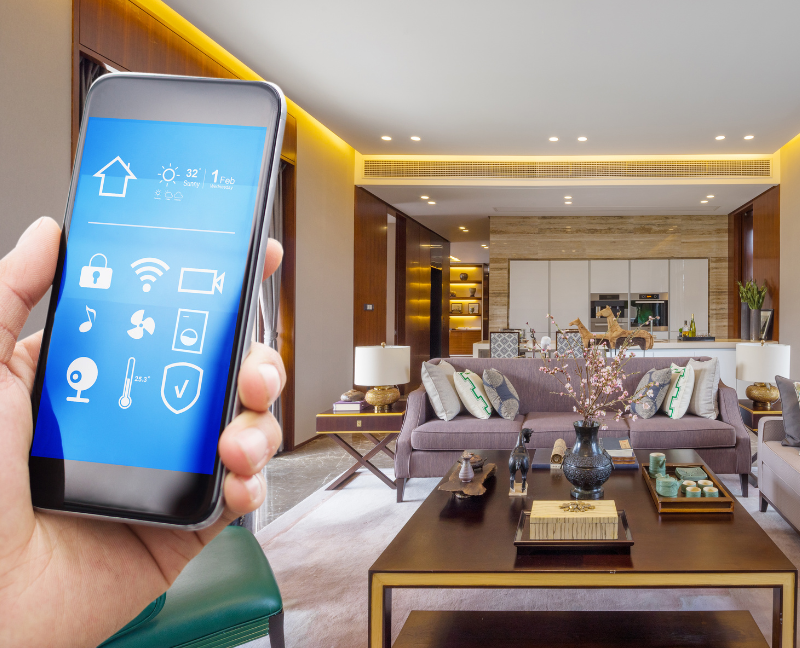
One of the simplest ways to increase the value of your home on a tight budget is to replace the lighting fixtures in your house.
Fully Renovated: An elegant look can be achieved with recessed lighting. It makes a good buzzword for selling the property. Dimmer switches, which are inexpensive and easy to install, provide elegance. Always turn off the room's breaker before touching cords.
Specific Updates: Wattage and color temperature matter when replacing bulbs. A cooler bathroom can look clean with warmer kitchen and living room colors. Your flip may sell for more with minor stylistic changes that complement the home's style and the buyer's market.
The ability to impress buyers with accurate data is a significant benefit of energy-efficient upgrades. It will show them how better your property is than others.
Fully Renovated: Renovations should begin with new insulation. Average houses lose energy from a three-foot-square hole in the wall. Updating windows can also improve energy efficiency.
Specific Updates: Use LEDS in your home or advanced technology to turn your property into a smart home. This helps promote energy efficiency, lifetime, and electricity bill savings to buyers. Start with rebates and free energy audits—there are many government-funded energy efficiency programs to boost house value on a budget.
An expansion will never be a first step when flipping a home. Additions increase livable space but rarely return on investment.
Fully Renovated: Check out surrounding homes that have added extensions before hiring an architect. You can assess the cost-to-return ratio by looking at local sales to evaluate if the extension is worth it. Knowing how an extension will influence your budget from the start is crucial.
Specific Updates: With prefabricated outbuildings, installation is cheaper than ever. Increasing living space to welcome guests, rent on Airbnb, or store products is a significant house improvement, but it's expensive. Consult your realtor to verify a check that covers more than expenses.
Conclusion
Expert house flippers and rental property investors may assess a distressed property and determine what modifications yield the highest profits and how much to flip it for. First-time flippers should engage an experienced general contractor to manage repairs, but get multiple quotations and don't overdo it.
Knowing where to begin shopping for the ideal pair of blinds is difficult because so many alternatives are available. When thinking about how to choose blinds for your home, there are a few essential considerations you should bear in mind, and this post will show you what they are.
To help you know which blinds to choose, here are some questions to guide you:
Smaller windows are ideal for blinds due to their functionality and aesthetic appeal. Blinds suit smaller windows proportionally, making light and privacy adjustments easier. Larger windows can make installing and operating blinds difficult due to their size and weight.
Blinds on smaller windows look clean and classy due to their precision. Fitted shades give the window a modern look that matches its small size. This adds a touch of refinement and optimizes the possibilities for a well-balanced and visually acceptable window treatment option in places where more enormous alternatives may be overwhelming or impossible.
Selecting curtains or blinds is essential for maximizing the space's aesthetic appeal and practicality when designing a small living area. Curtains can provide the impression of grandeur because of their flowing design and voluminous fabric, but they can also make a small window feel claustrophobic.
On the other hand, blinds are a valuable and compact substitute that fits nicely with the limitations of smaller apartments. Their inconspicuous look is enhanced by their streamlined form and flexibility to stack or roll up neatly, which lets natural light flood the space without being overpowering.
Because of their versatility, blinds are an excellent option for small living areas since they can be used as a practical instrument for light control and an attractive window treatment that blends in with the cramped layout of small flats.
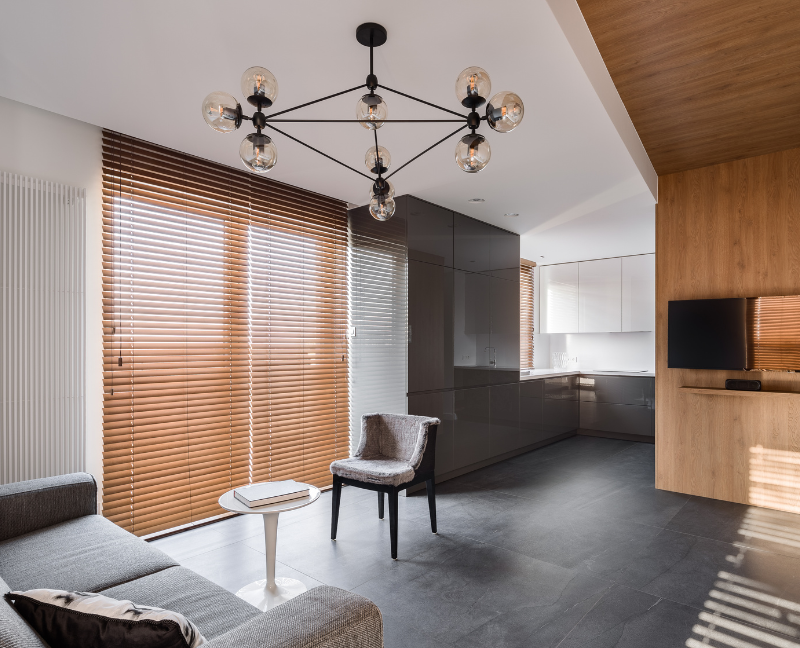
Double blinds are the most effective, as they minimize the day's glare and preserve privacy during the night hour. When the light is allowed to pass through certain types of materials, they bring forth a great deal of texture.
The presence of these elements enhances the atmosphere in the room. We provide a variety of materials that can be used to achieve the desired level of seclusion, whether with a great deal of light coming in or with no light at all. Blinds are challenging to clean, which is a disadvantage of using them.
Blinds that operate by hand and motorized are both offered by the market. Usually, the motorized ones are designed for windows that are out of reach. If you choose a manual one, test it in the store to ensure the mechanism works smoothly. When blinds are built to be no wider than four feet, they are usually easier to operate.
You can choose colors, patterns, and materials once you know exactly where, how many, and which blinds to choose will work best for you. Blinds are now available in innovative natural materials, like those made of hibiscus or banana fibers, for people who prefer earthy tones. The traditional chatthai remains a highly favored option and a valuable addition to outdoor areas.
Bottom Line
Another method for identifying colors is a "mood color board." This season's delicate colors give way to colorful ones, and floral designs are also quite fashionable. While changing your window displays' look might be costly, having blinds with a simple design, such as neutral shades, lets you easily switch up your bed linens and pillows.
Here's the thing -- a home can appear expensive even without paying a hefty amount in many ways. Often, the key is adding a few "affordable" finishing touches to give an impression of a luxurious home. As they say, "less is more!"
Why make a home feel luxurious, you ask? Well, while the idea of having a well-curated home is undoubtedly delightful, it's also a terrific method to raise the value of your house if you want to sell soon.
These professional interior design tips will help you create an opulent look in any room of your house, whether you're searching for ideas for a luxury living room, bathroom, or elsewhere.
The materials you choose and the way you arrange your room will ultimately determine how expensive a house seems. There are lots of decluttering tips available to assist you.
Decluttering should be the first step in any home design job. Having your home decluttered will guarantee you are beginning from scratch because clutter doesn't exactly scream "expensive."
Avoiding anything that gives the impression that your home is cheap is also crucial.
If you're thinking about listing your home for sale, starting with making the outside of your property appear more expensive will have the most impact on curb appeal and maybe buyer interest.
Painting your front door or swapping out the old hardware for new, fashionable pieces can take care of this. It can also entail updating your front porch ideas to make it look more expensive, growing the best plants for your front yard, and adding eye-catching furniture to your front porch.
The days of a matching set of furniture as a hallmark of excellent interior design are long gone. Texture, interest, and character are everything these days. Antique furniture, particularly wooden pieces, can be a terrific way to add an opulent aspect to a home's décor. To create a room that is genuinely distinctive to you, you might combine older and current furnishings.
Older wall paneling concepts were popular because they elevated a room and made the design look instantly 'rich'. They were originally utilized as an insulating technique in period dwellings.
Every room in your house can benefit from paneling; there are options for both the living room and the bathroom. Furthermore, it's a remarkably economical decorating method—often less expensive than wallpaper.
Though wall paneling is undoubtedly the more conventional choice, have you thought of ceiling paneling as well? Adding architectural interest to a sometimes-overlooked aspect of interior design, this ceiling idea is one of our favorites because it accentuates the space's height, another way to make a house appear more valuable.
A chandelier completes any opulent-looking room, and they don't have to be pricey in and of themselves (you can buy affordable chandeliers on Amazon, which is crucial if you are decorating a home on a budget). But chandeliers aren't only for homes appropriate for a historical drama; modern and traditional homes can also profit from the instant elegance of a chandelier, and there are many different options for living room chandeliers.
Bold pendant lights are one of our favorite ways to provide a sense of luxury to a living room. They also lead the eye upward, highlighting the room's height and creating the illusion of more space and light.
Modernizing your staircase may seem like an odd method to add value to your property, but fresh ideas for staircases, like refinished or new banisters and balustrades or tastefully painted risers, can drastically change how potential buyers view your house.
There are plenty of methods to design a staircase that will breathe new life into your current flight, even if you decide against a complete overhaul. Think about tearing up worn-out stair carpets and installing gorgeous wood flooring ideas—or even wood-look flooring—in their place. Then, you may embellish these with attractive stair runner ideas that will improve grip and look good.
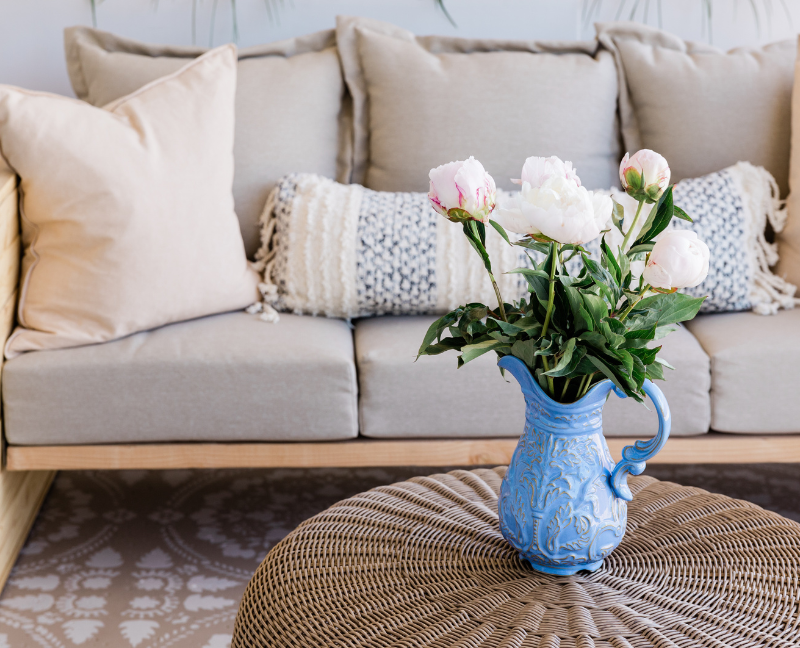
Adding fresh flowers adds instant color to any room.
Adding floral décor to a home is an easy and fast method to give it an upscale appearance. Fresh flowers give a space body and color and infuse it with vitality and, in some cases, a lovely scent.
Choosing the appropriate colors and textures, as well as size, shape, and placement, can seem like a difficult task when it comes to decorating with art. Fortunately, there's no shortage of guidance when it comes to selecting artwork for your house, as well as an abundance of eye-catching gallery wall ideas.
Wooden flooring is a timeless beauty and a highly sought-after characteristic. Loved for its warmth beneath your feet, longevity, and genuine, natural beauty, it will give any space it is installed an upscale appeal.
When it comes to establishing the mood of any interior, flooring is essential. If you get this one right, the rest will fall into place.
There are numerous alternatives to choose from. For instance, using natural wood flooring in a bedroom not only ages beautifully but also displays a charming distinction of tones between each board.
Another example is luxury laminate wood-style flooring for a kitchen. It can accomplish a similar finish at a far lower cost if you adore the look of wood but would prefer something a little more affordable.
It's not necessary to overspend while furnishing your house with opulent materials. Sure, a marble bathroom will look amazing and undoubtedly exude wealth, but there are other options as well.
To have the money to invest in the things that truly matter to you, like a marble sink for your kitchen or a large fireplace for your living room, consider making savings in certain areas that aren't as important to you. For example, you might choose engineered wood flooring over real wood or a less expensive paint brand.
A marble coffee table tray or a gold candle snuffer are two examples of luxurious accessories that you can add to your decor to make it appear more expensive without going over budget.
Since we live in a technological age, every area in your house may have cables, whether it's for chargers in the bedroom, kitchen appliances, or TVs in the living room. However, misplaced wires can bring down even the most tasteful space. Organizing wires and hiding cords on kitchen countertops is crucial to creating an opulent look for your home as this will help to minimize visible clutter.
Think about going with an all-in-one wireless alternative for device charging. The dock offers a simple, minimalist solution to charge all of your gadgets without the need for several wires, and the single cable can be tucked beneath sideboards or bedside tables.
The simplest solution is to hide appliances in the kitchen. Toasters, blenders, and other sporadic appliances should be kept in a pantry or cupboard until they are needed. By doing this, you'll cut down on the number of cords while maintaining pristine kitchen countertops.
These are just some ideas for making your home look luxurious without burning a hole in your wallet.
If you have more, we'd love to know them in the comments!
Living an environmentally-friendly lifestyle is sometimes misunderstood, mainly because it's costly, inconvenient, and demanding.
But in reality, choosing to live in a sustainable way is relatively simple; all it takes is one slight adjustment at a time to make a big difference. In this post, we’ll share some eco-friendly tips to help you get started.
The average home uses 9% of its energy on lighting.
Now, if you want to lower your energy bill and environmental impact from all your light bulbs, using LED bulbs is a cheap and easy alternative. It also provides high-quality light output and emits less heat, unlike standard bulbs, which might make your air conditioner work harder.
LED bulbs have also evolved to fit recessed lighting and dimming controls.
Not only are plastic water bottles uneconomical, but it's also harmful to the environment. Plastic production requires three times the water in a water bottle to make one, yet 80 percent aren't recycled.
So instead of constantly buying a plastic bottle, get a reusable, portable water bottle.
Not only will you save money by reusing a water bottle, but there will also be fewer plastic bottles needed.
The good thing about having recycle bins is that it makes you more aware of recycling glass bottles, jars, paper, and other objects. To simplify recycling and composting, have trash and recycling bins in more than just the kitchen.
Meanwhile, a compost bin will let you eliminate leftovers and give your plants free fertilizer.
Tip: Make sure that the compost bin has a tight cover and a secure hatch at the bottom for extracting fertilizer when ready to use to avoid pests.
Reducing meat consumption can create a significant impact on the environment as it helps reduce GWP emissions.
In case you didn't know, more than 30 percent of the Earth’s surface is being used to raise and support livestock.
“The livestock sector accounts for 9 percent of CO2 deriving from human-related activities but produces a much larger share of even more harmful greenhouse gasses. It generates 65 percent of human-related nitrous oxide, which has 296 times the Global Warming Potential (GWP) of CO2," according to research by the United Nations.
Other than the GWP gas emission, consuming fewer farm animals means having more land to use for recreation.
So instead of having meat-only meals, consider consuming more vegetables and seafood.
Choosing to live in an eco-friendly home setup doesn't mean leaving paper towels for good. It's about using old shirts or fabric for cleaning or drying instead of buying a dozen paper towels.
Regular toilet paper is not eco-friendly because everyone uses 100 rolls yearly.
If you want to switch to an eco-living lifestyle, you should use bamboo toilet paper for the sake of environmental sustainability since there are bamboo species that grow 36 inches in 24 hours.
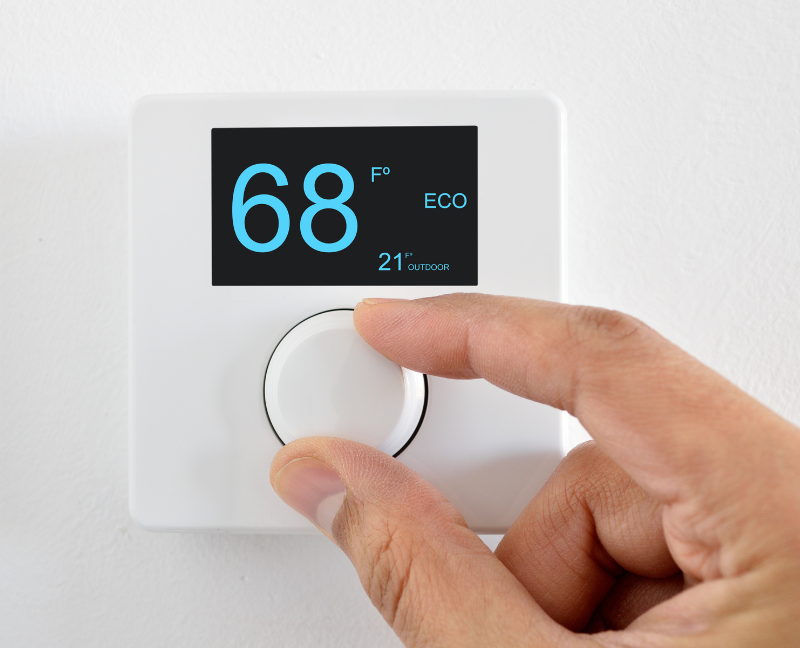
Monitor and control your HVAC systems with a programmable thermostat. Smart thermostats lower utility bills and make homes greener. It also saves energy, which, for some, is the main reason to upgrade.
A smart thermostat lets you arrange your HVAC to operate less while you're away, saving you energy by cooling your home just when you're home.
You can set your digital thermostat to turn on right before family members arrive to cool your home to 72 degrees from the minute you enter. Nest claims 15 percent cooling savings and 10–12 percent heating savings.
Turning them off while leaving a room, especially when leaving the house, saves energy and money. However, the electricity saved by turning the electric lights off depends on the bulbs used.
For instance, incandescent bulbs are energy-inefficient. Before producing light, these lights convert electricity into heat. It provides 90% heat and 10% light. Thus, turning off incandescent light bulbs saves energy at home.
So if you leave your house for over 15 minutes, be sure to switch them off to save electricity. The method also extends CFL bulb life.
Meanwhile, LED bulbs won't be affected by turning them on or off.
One of LED lamps' key features makes them perfect for residential energy conservation. They can also be turned on and off automatically and brightened instantaneously with sensors.
Energy Star estimates that washing machines consume 90% of their energy to heat water. Washing with cold water can reduce carbon dioxide emissions by 1,600 pounds annually.
Instead of heating, run your washing machine on cold. Not only does this cut carbon dioxide emissions, but it also preserves your garments, as hot water can fade colored clothes.
Unless you have oil stains, there's no use in washing on hot. You can try warm water if cold doesn't work. Still better than hot water; it cleans better than cold water.
The EPA found that dryers use more energy than refrigerators, washers, and dishwashers, and line drying can cut primary appliance energy use by one-third.
Fresh-air line-drying is remarkable. Also, drying clothes and bedding on a rack outside instead of in the dryer will prolong their life. Establishing a drying rack on your balcony and opening the windows will let the sun dry your clothing faster if you don't have a garden or backyard.
Home cleaning supplies contain the most potent bacteria-killers. These products are designed to kill almost all organisms. Man-made poisons harm the ecosystem and kill animals and plants once they enter our waterways via sewers, and these are just some of the reasons why opting for natural cleaning ingredients is a must.
Using organic cleaning products might be a better option but it can be costly. What you can do instead is to use DIY cleaning products made with vinegar, baking soda, and lemon juice. Not only is this eco-friendly, but it also helps reduce packaging waste and household chemical pollution.
Canvas bags replace inefficient plastic and paper bags at most stores. Although canvas bags are inexpensive, they are convenient. Canvas bags are more robust, hold more than plastic or paper bags, and help store and transfer objects.
Even if you don't use canvas bags, reusing plastic bags benefits the environment. Put plastic bags in tiny trash cans around the house or recycle them. Every little bit helps.
These are just some ways to make your home eco-friendly. Watch out for Part 2 to learn more tips.
The holidays might be exciting, but it can also be a stressful and expensive time of year. On top of this, decorating your home for the first time can be challenging.
If you want a home makeover on a budget, this post will share some DIY holiday transformations without spending so much.
Below are the following four tips you may consider if you want a makeover on a budget:
Putting together a neutral base of decorations is one way to reduce the likelihood of replacing pricey, on-trend pieces every year.
Pieces with a natural theme, snowflakes, and string lights are typically accepted and deemed ageless. In addition, you might consider sticking to a color scheme consisting of white, silver, and gold. By having a theme, you can avoid the potential temptations of impulsive buying while maintaining flexibility for possible future living arrangements.
Decorations are added to be... well, decorative. However, owning beautiful items for the sake of being beautiful may quickly turn into pricey clutter that you dislike keeping in a closet all year long, only to pull out and place on an end table. That said, checking for items that can serve multiple purposes can help you save money. For instance, instead of buying more holiday-specific gift wraps, use gold gift bags and white tissue paper for birthdays, bridal and baby showers, bachelorette parties, and wedding gifts.

Purchasing new items annually may be the best option if you don’t have enough storage space, and you can do a home makeover on a budget if you consider doing this. These days, fake trees are relatively easy to disassemble, and any rough parts on the tree may be covered up with additional garlands and decorations.
Since your tree will take up the same amount of room every year, adding to a collection of modest decorations won't affect your space as much as a tiny village or snow globe collection. Hanging Christmas cards from a fishing wire hanger on the wall is an additional space-saving method of bringing cheer.
Have fun as you establish roots—whether alone or with a family, in your present residence, or one that awaits you down the road—you'll be honing your sense of style and perfecting your home decor.
You may more successfully scan post-holiday clearance discounts and put new scores aside from your existing likes if you have a long-term vision. Setting long-term goals gives us everything to look forward to in both personal finance and design. Remember that you need to be patient and trust the process.
The key to success in doing a holiday makeover on a budget is a classic approach, considering decoration utility, storage limits, and a long-term goal. Holiday decorating should emphasize simplicity, functionality, and long-term vision.
A home is more than just a place to live; it's your personal sanctuary. It's where you seek comfort, relaxation, and refuge from the outside world. While the concept of coziness is subjective, there are certain built-in features that can universally contribute to a warm and inviting atmosphere. In this post, we'll explore some key elements that can transform your space into the ultimate haven.

Fireplace
Few features can match the charm and warmth of a built-in fireplace. Whether you opt for a traditional wood-burning hearth or a modern gas variant, a fireplace can be the centerpiece of your cozy living space. Its crackling flames and radiant heat make it a focal point for gatherings and a source of comfort on chilly nights.
Exposed Wooden Beams
Exposed wooden beams on ceilings or walls can infuse your home with a rustic and inviting ambiance. These architectural elements add character, making your space feel more grounded and cozy.
Built-In Shelving
Custom-built shelves or bookcases are not only practical but also contribute to the overall coziness of your home. Display your cherished books, collectibles, or family photos, turning these built-in shelves into a reflection of your personality.
Tranquil Window Seat
Imagine having a peaceful corner with a view and natural light where you can curl up with a good book. A built-in window seat offers just that. It's a tranquil nook that allows you to enjoy the outdoors from the comfort of your home.
Bay Windows
Bay windows provide a perfect spot for a cozy seating area or a charming dining nook. The additional space and the natural light they bring can make any room feel warmer and more inviting.
 Crown Molding
Crown Molding
Elegant crown molding adds a touch of timeless beauty to your home. It creates a sense of refinement and coziness that can transform any room.
Wainscoting
Wainscoting on your walls can introduce a sense of traditional warmth and style. It adds texture and character to your living spaces, making them feel more inviting.
Built-In Blinds
Built-in blinds or window treatments offer not only privacy and light control but also a polished and cozy look. They seamlessly blend with the architecture of your home.
Hidden Storage Solutions
Built-in storage solutions are more than just practical; they keep your space clutter-free and organized. Whether it's under-stair storage, hidden closets, or built-in cabinets, these features add convenience and a tidy, inviting environment.
Custom-Built Kitchen Island
A custom-built kitchen island can be the heart of your home, providing a central gathering place, additional counter space, and storage. It adds functionality and style to your kitchen, making it a cozy hub for cooking and socializing.
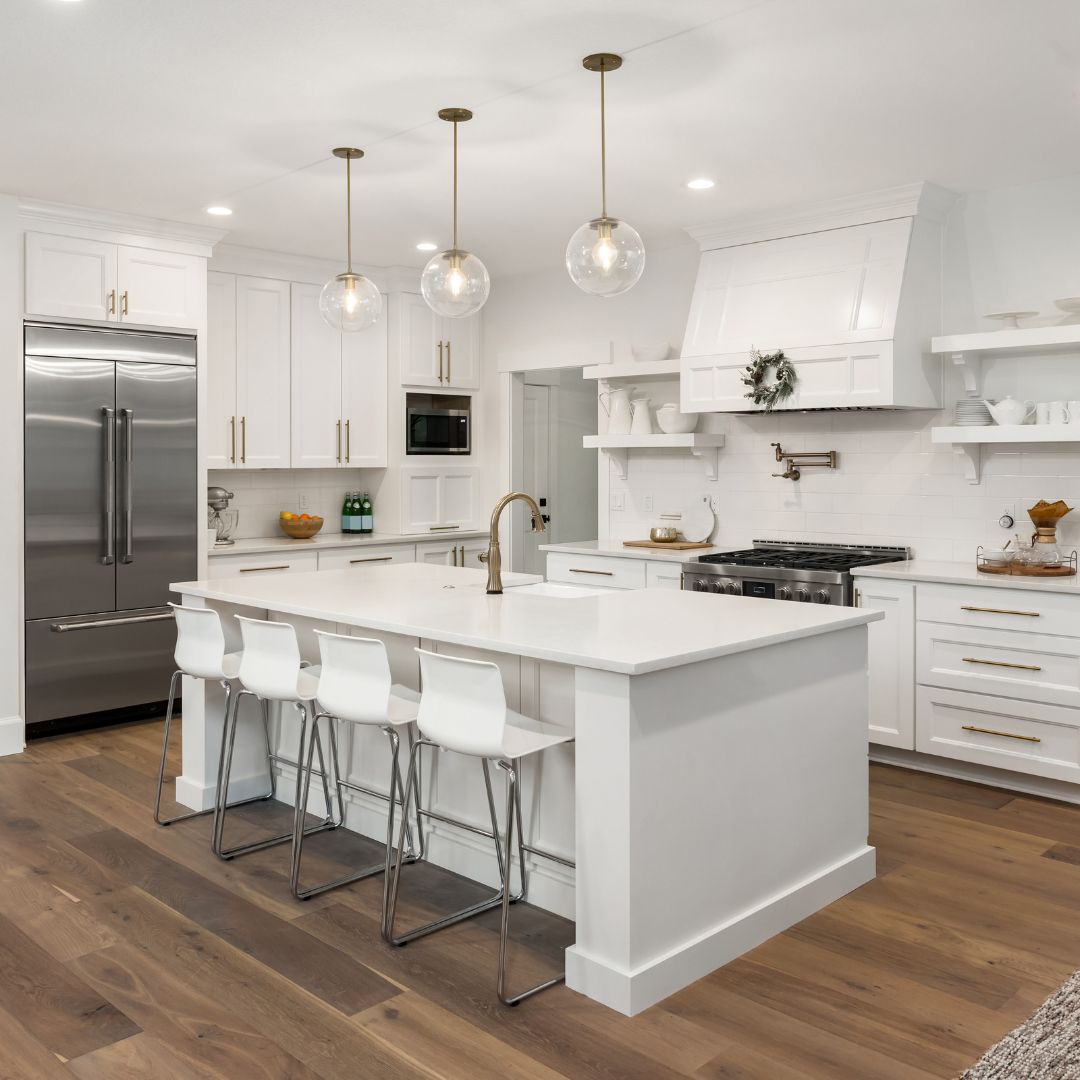
Incorporating these built-in features into your home can have a transformative effect, creating an environment that is both stylish and welcoming. Your living space will become more than just a house; it will be a true sanctuary of comfort and coziness.
Enjoyed this content? You might also find these articles worth your time:
Pumpkin carving and relaxing by the campfire are just two fun things you can do during the fall. In addition, the fall season is frequently a good time to enter the housing market.
There may not be as many people interested in purchasing a home during the fall as there are during the spring and summer; nevertheless, you may have less competition if you choose to sell your home during this time, and motivated purchasers may want to move into a new property before the holidays.
However, before prospective buyers visit your property, it may be good to know our best way to stage your home for sale with our valuable ways inspired by autumn to help it stand out.
Here are the five best ways on how to stage your home:
As autumn continues and the days get shorter, the amount of natural light that enters your home may decrease. You may ask, "How to stage your home using those lights?"
Well, one trick is to use more light around your home since well-lit rooms will make the space look larger and more inviting.
As you move from room to room, you should investigate to see if you can improve any dark with additional illumination. You can keep the lights in your home on timers so that they turn out after the showing, but you should inspect your lamps and light fixtures regularly and replace any bulbs that have gone out.
Painting the walls is another option to consider if you want to increase the amount of light that enters a particular room. Go for neutral colors, such as white and gray to make the living area more relaxing.
If your guests will be there after dark, you should remember to leave the outside lights on so that they can have a better look at your house and yard. This will also make warm and friendly lighting possible to greet guests, increasing your home's curb appeal.
During a showing of your house, it is essential to maintain the highest level of comfort possible, particularly in regions that see chilly fall days. If you have scheduled an open house, the ideal temperature should be between 70 and 73 degrees throughout preparation.
If it's too hot, the prospective customers can start to perspire and become distracted. People may become concerned that the heating system is malfunctioning when it gets too cold.
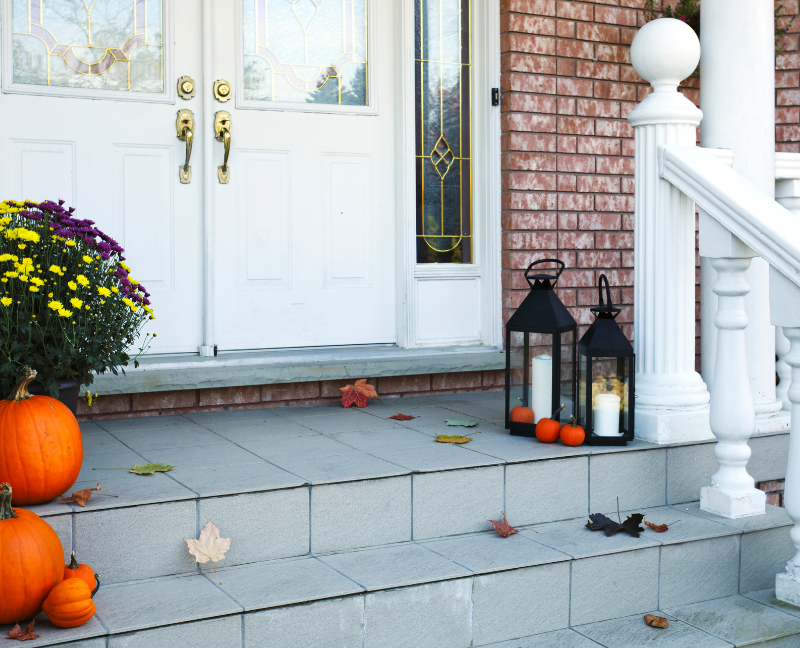
The fall season is when coziness and convenience are of the utmost importance. Utilize this to work to your advantage and spruce up your sofa or armchairs by adding throw pillows and accent pillows in a color scheme inspired by fall. If the floors in your home are hard surfaces like tile or wood, you can also put plush rugs all about the house.
If your home has a fireplace, you should store some wood beside it so prospective buyers might picture themselves snuggling up in front of it on a chilly autumn day. You can suggest to your real estate agent that they light a fire in a gas or electric fireplace during the showing so that the space feels more at home.
Even though summer is gone by, help your outdoor area look more inviting to your buyer. Here are some tips that can help you improve the look on how to stage your home:
Putting one or two fresh pumpkins on your front porch can create the feeling of being at home while adding a splash of color if you wish to decorate the front of your house for fall. However, you need to keep a close eye on the gourd to ensure it doesn't start showing any signs of rotting, as this is a huge red flag for prospective purchasers of homes.
Finally, this is the least valuable way to stage your home. Even though you might enjoy decorating for holidays like Halloween or Thanksgiving, storing your decorations while trying to sell your house is best. Seasonal decorations should not be overdone; some can even turn off prospective homebuyers. Instead, limit your decor to a classic fall motif, such as a wreath or color scheme.
Looking for more fall staging tips? Check these blogs for inspiration:
You may also visit our website for more content like this.

8313 W. 10th St
Indianapolis IN 46234
dennis@indyhomepros.com
317-316-8224